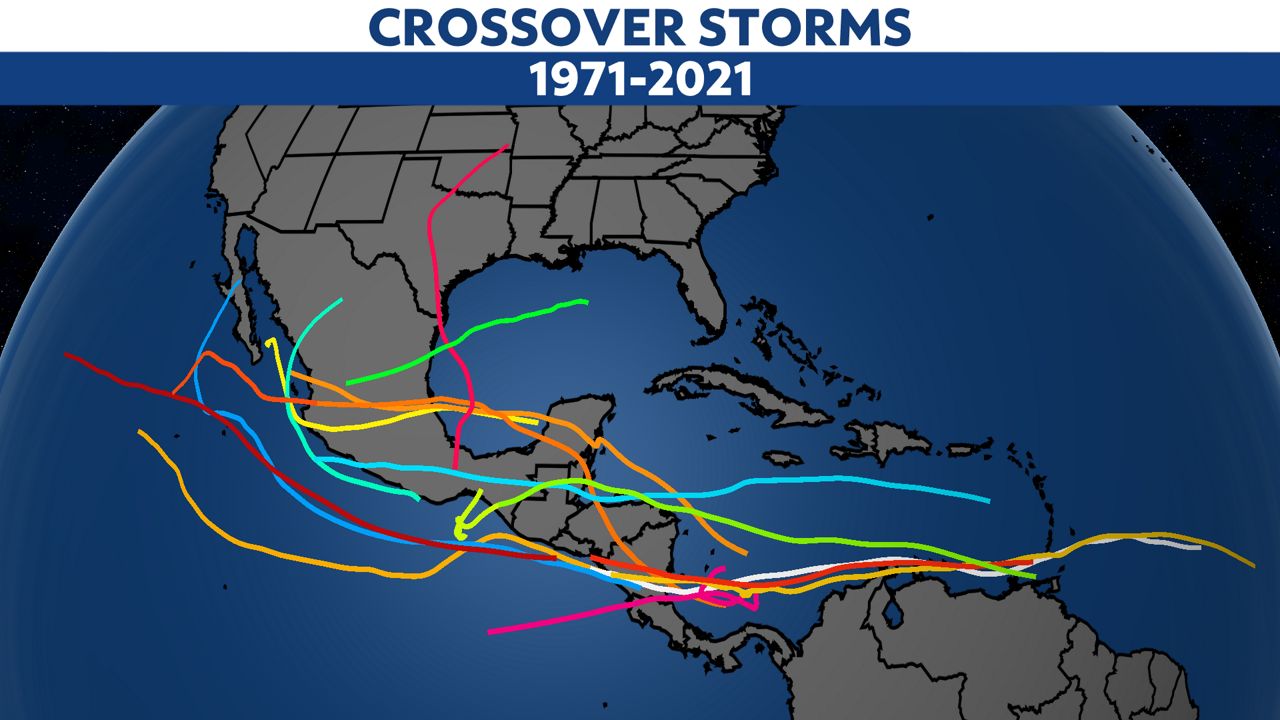How often do tropical storms cross from one ocean basin to another, and do they keep the same name?
Most tropical systems dissipate when moving from one ocean basin to the other, especially going from the Pacific into the Atlantic. That’s mainly because of the prevailing winds that push systems to the west.
Much of Central America is mountainous, and tropical systems have trouble maintaining their integrity when moving over rough terrain.
But in southern Nicaragua and northern Costa Rica, the land is relatively flat and the land mass is rather narrow, so a storm has a better chance of not falling apart.
When a storm stays fully intact from one basin to another, it’s called a crossover storm and its name doesn’t change. That policy went into effect in 2001.
Two systems have been crossover storms since then. Otto was a strong late-season tropical cyclone that affected parts of Central America in Nov. 2016 and was a rare Atlantic-to-Pacific storm. Hermine went from the Pacific to Atlantic in 2010, although it didn’t get a name until it was in the Gulf of Mexico.
The most recent double-name storm was Cesar-Douglas in 1996.
Tracks of crossover storms since 1971. Some lines aren’t continuous because of time spent as an unnamed tropical depression in one of the basins.
Seventeen other storms are known to have been crossovers since the mid-1800s. Weather satellites have made it easier to track tropical systems since the 1960s, so it’s possible more crossovers happened before then.
More often, tropical cyclones make landfall in Mexico or Central America, fall apart, then the remnants reemerge in the other basin and develop into a new tropical storm.
That usually happens at least once every few years, but has happened as often as three times in a single season. In 2017, Bret’s remnants became Dora, Franklin’s remnants became Jova and Katia’s remnants became Otis.
The last time it happened was, well, this year. Alex, the first storm of the 2022 season, originated from a broad area of low pressure partially related to the remnants of Hurricane Agatha in the Eastern Pacific. Alex was a strong tropical storm that caused flash flooding in western Cuba and South Florida.
The bottom line is that if a storm retains enough strength and integrity between the two basins, it will keep its name. 2022’s Bonnie is on the short list of crossover storms.

